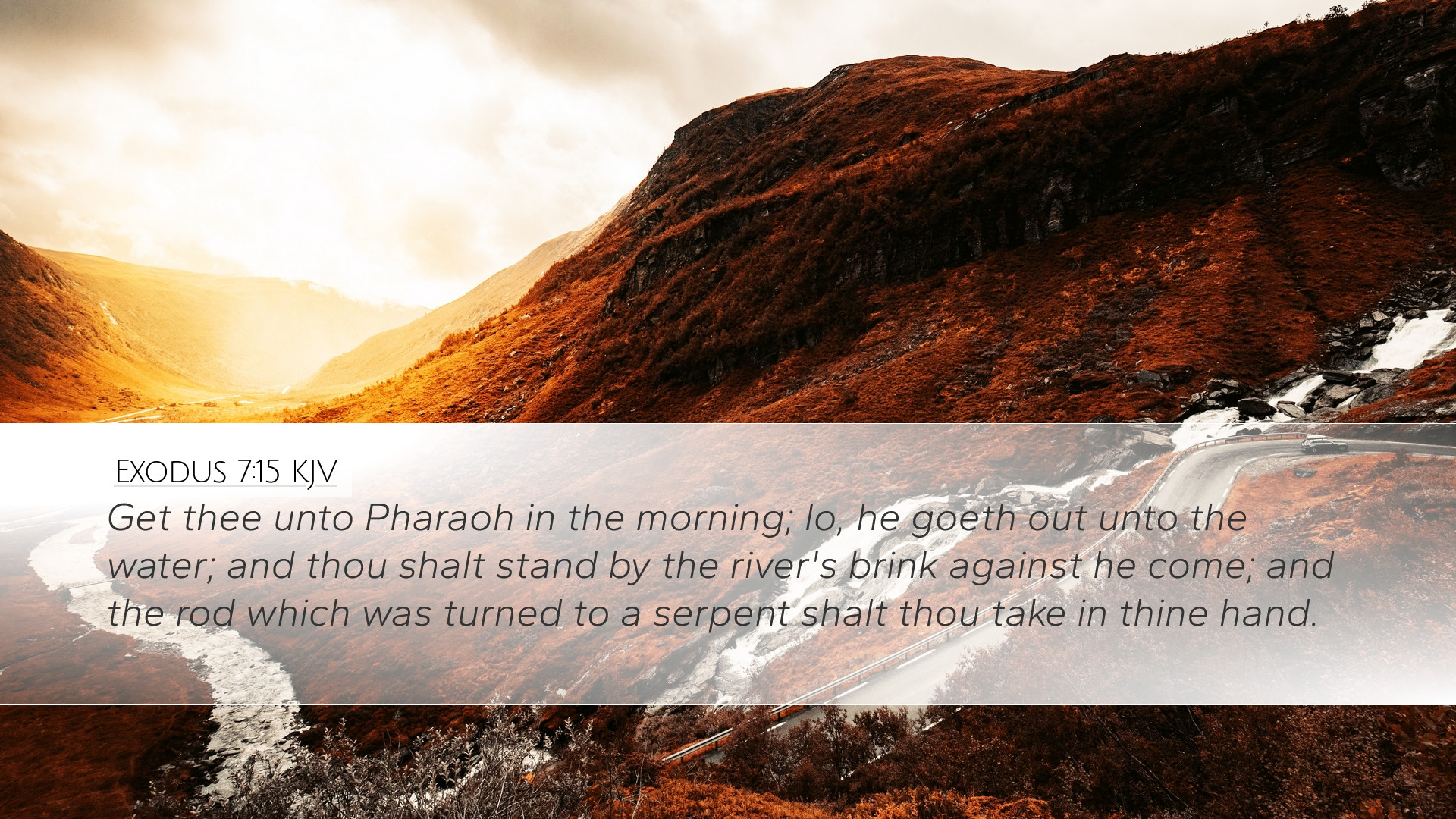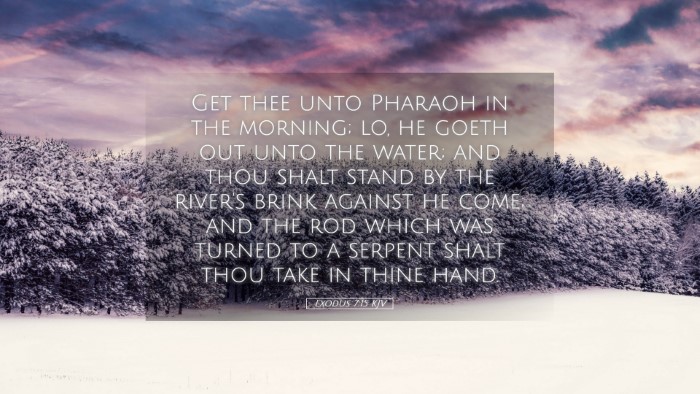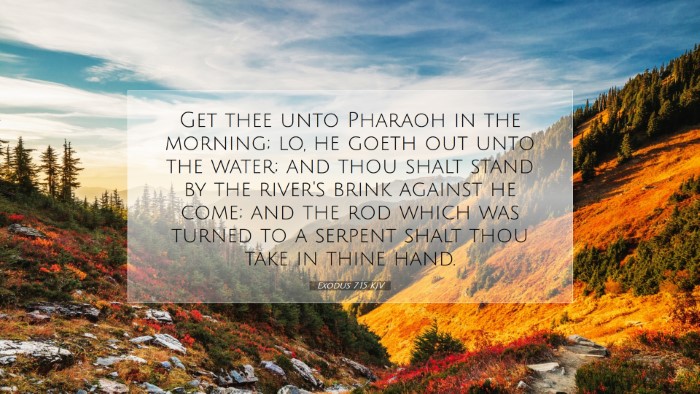Exodus 7:15 - Commentary and Insights
Exodus 7:15 states: "Go unto Pharaoh in the morning; lo, he goeth out unto the water; and thou shalt stand by the river's brink against he come; and the rod which was turned to a serpent shalt thou take in thine hand."
Contextual Understanding
This verse comes during a critical moment in the book of Exodus, where God's command to Moses serves as a prelude to the impending plagues that would befall Egypt. The background here is rich with theological significance, as it marks God's intention to demonstrate His power over Pharaoh and the Egyptian gods.
Significance of Pharaoh's Location
Moses is instructed to meet Pharaoh in the morning as he goes to the water. Matthew Henry notes that this is not a mere geographical indication but symbolizes Pharaoh's reliance on the Nile River—the source of life for Egypt. As he is met by Moses, the challenge is not only against Pharaoh's will but also against the Egyptian pantheon that worshiped the water.
The River as a Symbol
The Nile represents fertility, sustenance, and divine authority within Egyptian culture. Albert Barnes emphasizes that meeting Pharaoh there demonstrated God’s supremacy over what Egyptians held sacred. This encounter foreshadows the transformative miracles that would soon unfold, showcasing God’s ability to alter the very elements of nature.
God’s Instructions to Moses
Moses is instructed to take the rod that has already been turned into a serpent. Adam Clarke highlights the significance of this rod as a symbol of God's power. The rod signifies authority and divine intervention, representing how God empowers Moses to confront and challenge those who oppose His will.
Preparation for Confrontation
In preparing Moses for this moment, God directs him to be steadfast and fearless. Matthew Henry emphasizes that God equips His servants not only with the message but also with the tools of support necessary to accomplish His will. The rod, now a serpent, is an emblem of the authority granted to Moses.
Implications for Today’s Audience
For pastors and theologians, this passage speaks volumes about the importance of divine assignment and preparation. The encounter highlights God’s unwavering authority and His intentions for His chosen leaders to step into challenging circumstances faithfully.
Lessons from Pharaoh’s Stubbornness
Pharaoh’s attitude serves as a warning against hardness of heart. Albert Barnes points out that despite clear signs and indicators of God’s power, the human heart can remain obstinate in pride. This challenges believers to examine their own hearts for stubbornness against God’s will.
Faithfulness in Confrontation
Moses’ meeting with Pharaoh exemplifies the need for believers to stand firm in faith when confronted with cultural or systemic opposition. Adam Clarke urges that just as Moses had to confront Pharaoh, so do contemporary believers need to stand firm in the face of modern-day oppressions and injustices.
Theological Reflections
- God’s Sovereignty: The orchestrated meeting between Moses and Pharaoh reveals the sovereign control God has over history and nations.
- Divine Empowerment: God equips and assures His messengers with specific tools and support as they step out in obedience.
- Warnings Against Idolatry: The command to confront Pharaoh serves as a reminder of the folly of placing trust in earthly substances or powers.
- Obedience and Action: Moses’ response to God’s call exemplifies the need for prompt obedience in the face of daunting tasks.
Conclusion
Exodus 7:15 resonates deeply within the narrative of the Exodus, portraying foundational themes of divine authority, preparation, and the confrontation of evil. The insights drawn from public domain commentaries aid pastors, scholars, and students alike in understanding the theological depth and practical applications found in this pivotal scripture.


